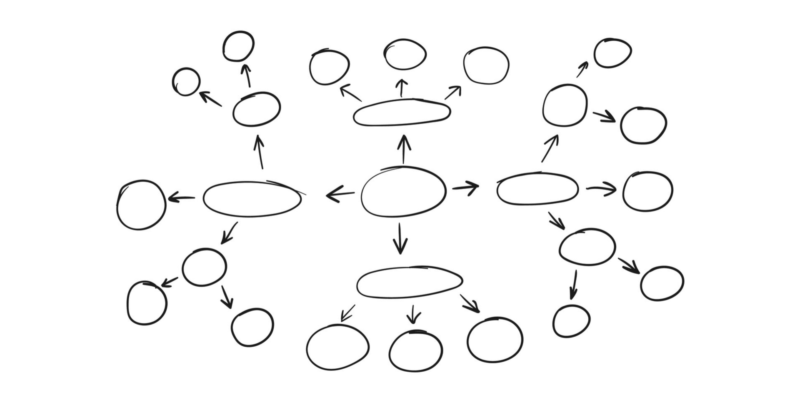We explain what a concept map is and what its characteristics are. Also, the steps to make one and examples.
What is a concept map?
A concept map is a graphic tool or scheme that facilitates the organization of knowledge . Using interrelated words and symbols, it raises complex concepts represented in a way that makes decoding easier.
The information contained in a concept map is very limited, it is only based on the main concepts or keywords of the topic to be developed . It is a kind of summary with graphic support that facilitates rapid understanding and the ability to remember ideas , which is why it is also called a diagram map.
Origin of the concept map

The concept map proposal was developed in 1972 by the American professor Joseph Novak , who did a great deal of research on the way in which people learned new concepts from their previous knowledge.
The concept map was one of several of Novak's contributions . It was a tool that changed the way of processing new knowledge during school learning, making it possible for students to associate and relate multiple concepts. It was also applied in the academic, professional and scientific environment.
Characteristics of the concept map

The characteristics of a concept map are:
- Detail concepts and short phrases clearly.
- Use words as connectors, such as verbs that allow you to link isolated concepts in the diagram.
- Use words, symbols and colors to quickly and clearly make multiple concepts visible.
- It encourages the connection of concepts with other ideas that are conceived in the mind.
- It allows to communicate complex topics in a simple way and highlighting the most relevant points.
- It allows you to visualize concepts within a broader context, not just the definition of ideas.
Before putting together a diagram it can be useful to ask focus questions to define the answers that will lead to the concepts or keywords. The questions should be about important aspects and the answers should be answered in a limited way or with a single word.
Steps to create a concept map
 To develop a concept map it is useful to follow the following steps:
To develop a concept map it is useful to follow the following steps:
- To select. It consists of summarizing all the information and rescuing only the key points that allow us to understand the topic to be developed with the least amount of data possible.
- Group. It consists of organizing the information already summarized in groups that maintain some relationship or, on the contrary, that result in opposite concepts.
- Tidy. It consists of classifying the information from the most concrete and simple concepts to decode, to the most abstract and complex to understand.
- Connect. It consists of establishing links between the different organized data. They can be ideas or sentences that must then be summarized or arrows that will serve as a connector between the concepts.
- Reflect. It consists of reviewing and rethinking all the previous steps and the information obtained, assuming that the diagram must be able to be decoded by someone who is unfamiliar with the subject.
The above content published at Collaborative Research Group is for informational and educational purposes only and has been developed by referring reliable sources and recommendations from technology experts. We do not have any contact with official entities nor do we intend to replace the information that they emit.
Luke is passionate about fostering student involvement and connection. He studied psychology for his major and likes learning about the past. Luke aims to specialize in artificial intelligence and cybersecurity. .
Leave a reply
Your email address will not be published. Required fields are marked *Recent post

Sport: What Is It, Types, Risks, Features, Characteristics and Examples

Dogs: Emergence, Features, Characteristics, Feeding and Breeds

Story: Definition, Elements, Structure, Features and Characteristics

